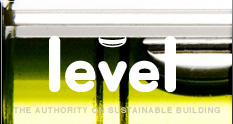- Home
- Site Analysis
- Site Use
- Passive Design
- Water
- Material Use
- Energy
- Wet Areas
- Health and Safety
- Other Resources
Passive Design
Designing the building and the spaces within it to benefit from natural light, ventilation and even temperatures.
Controlling indoor air quality
Moisture and contaminants from building materials and activities such as cooking and heating can harm building occupants’ comfort and health.
Moisture generally results from activities such as cooking and washing, as well as from building occupants’ breathing, and from unflued gas heaters.
Common sources of contamination include smoking, building materials giving off volatile organic compounds (VOCs), and combustion (of gas or wood) for cooking and heating, which gives off particulates, carbon, sulphur, nitrogen oxide and complex organic molecules such as polycyclic aromatic hydrocarbons.
Air may also be contaminated by biocontaminants such as mould and fungi spores.
Moisture can affect both thermal comfort and health. Common airborne contaminants have been linked to a range of symptoms such as headaches, sinus congestion, dizziness, nausea, irritations of the eyes, nose and throat, respiratory problems, allergies and neurological disorders.
Contaminants, including excess moisture, should be eliminated by removing the source of contamination – for example, by specifying low-VOC building materials – or installing extract fans as close as possible to the source. The Acceptable Solution G4/AS1 requires mechanical extract fans to remove moisture from rooms that contain cooktops, showers and baths in household units and accommodation units.
It is especially important to persuade householders not to use portable gas heaters because of the moisture they add to the air inside a house. In the 2018 Census, almost a third of the households that relied on portable gas appliances for home heating reported problems with mould.
There is other strong evidence that our homes are poorly ventilated, in the 2018/19 Pilot Housing Survey that BRANZ carried out in partnership with Stats NZ. Assessors visited 832 houses and among other things, assessed the presence of mould. They found moderate or worse areas of mould (the size of an A4 sheet of paper or bigger) in 28% of bathrooms, 19% of living areas and 35% of bedrooms of all houses visited.
Air purifiers
Air purifiers cannot be used to meet Building Code requirements but can still be useful for people susceptible to health problems where there is an excess of pollutants in the air. The HEPA filters in many purifiers can take out particles as small as 0.3 microns (less than one-hundredth the thickness of a human hair). This means they will trap dust, pollen, pet hair and dander.
Updated: 11 April 2022

